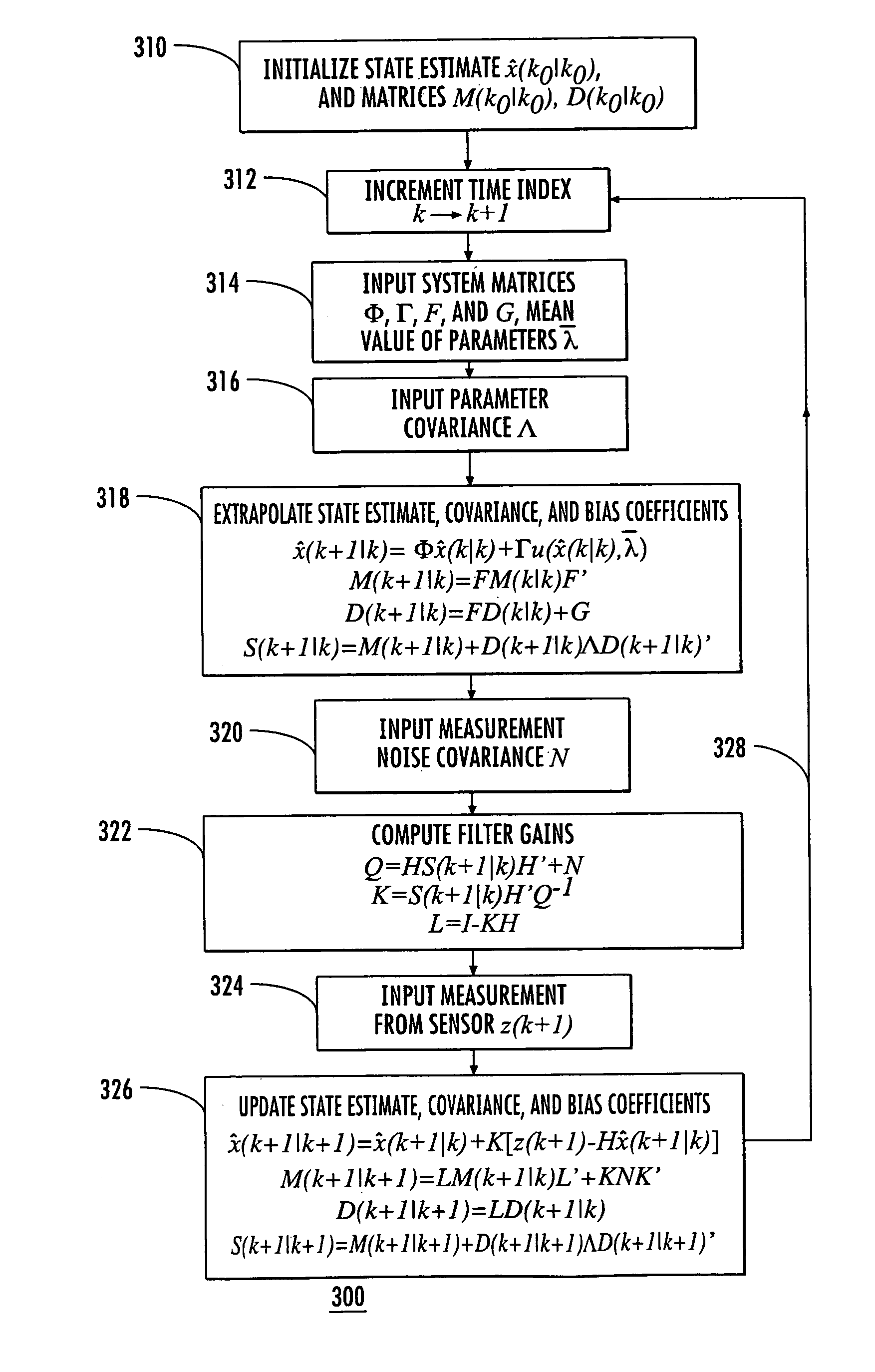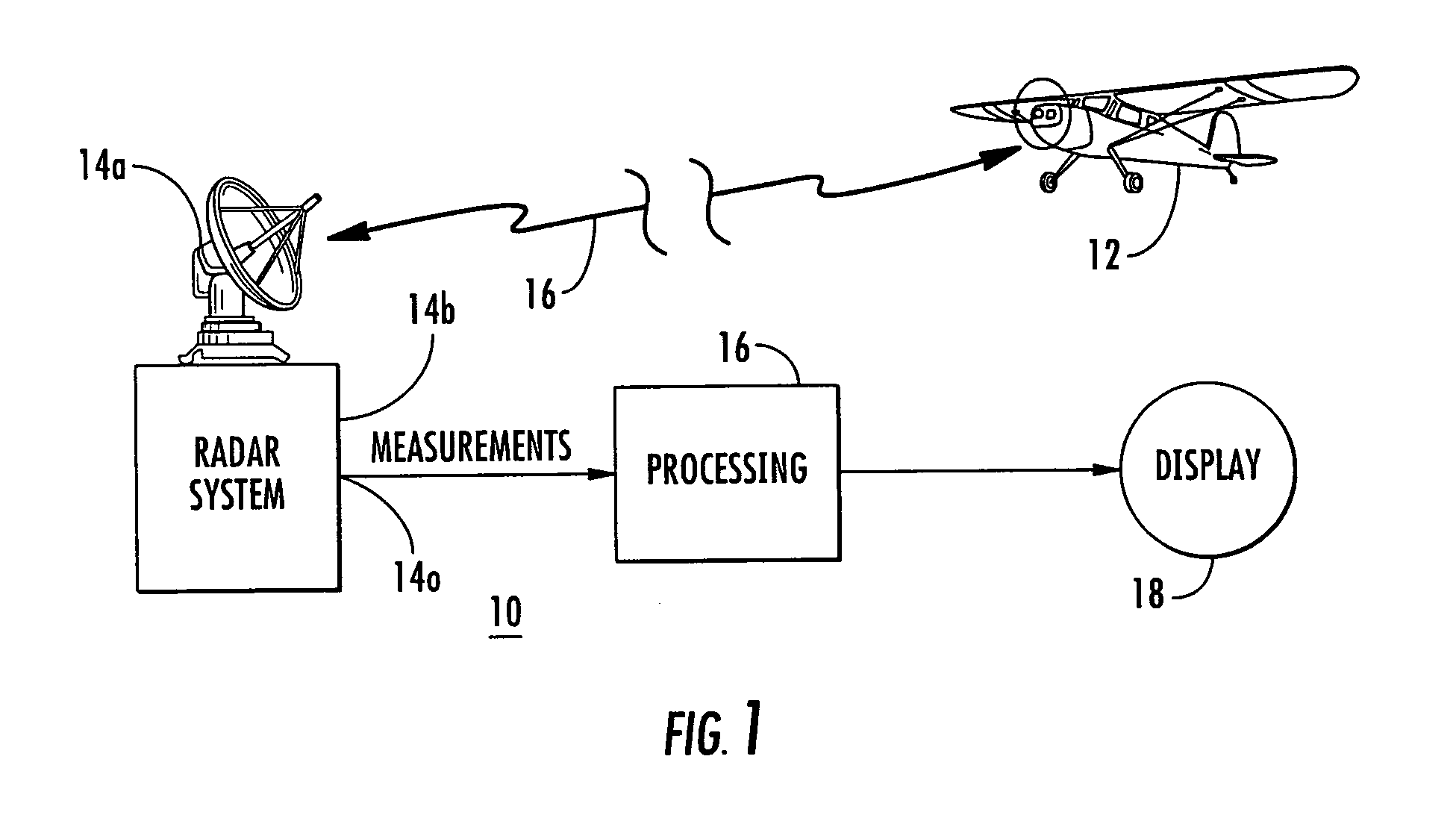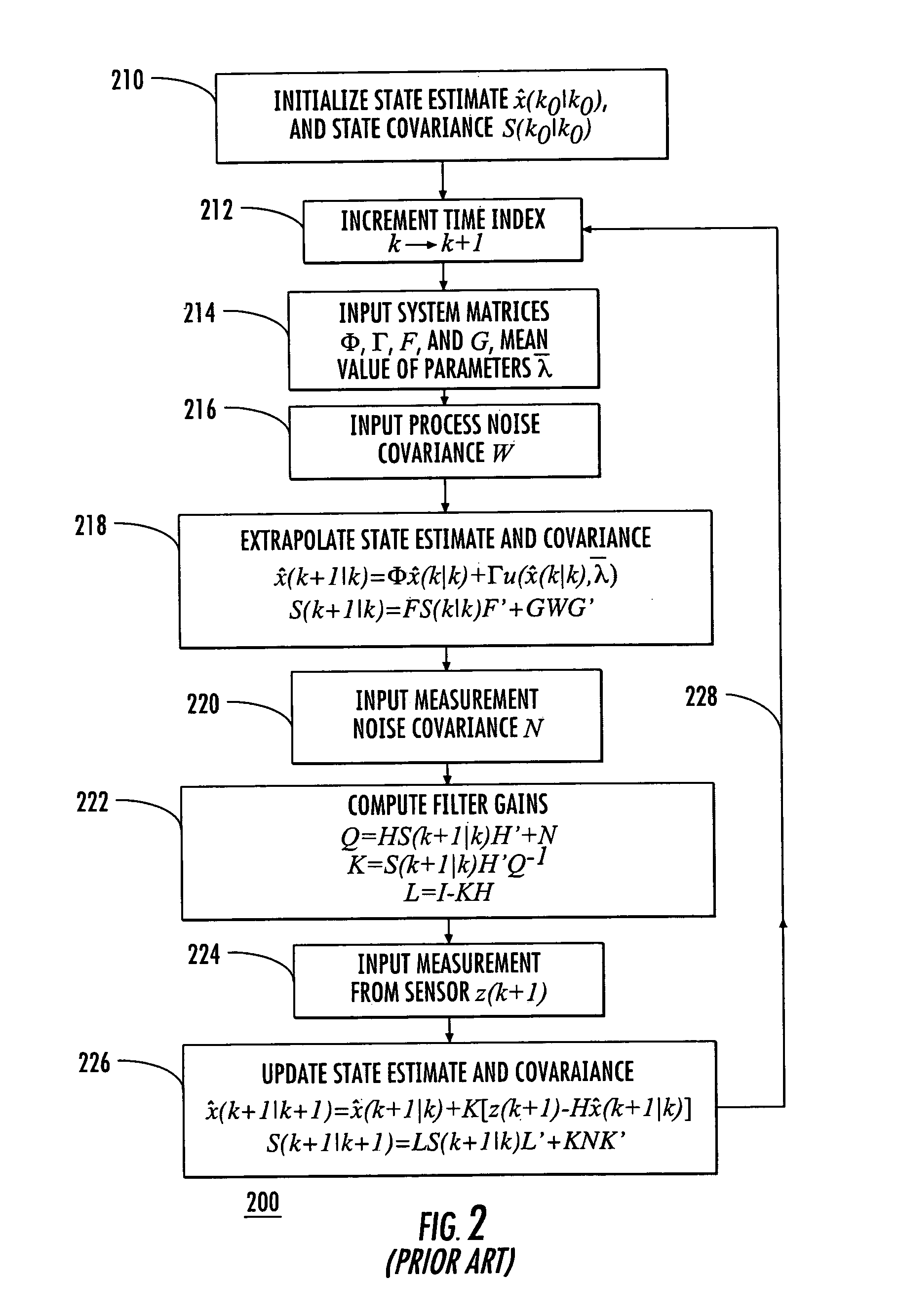Reduced state estimator for systems with physically bounded parameters
- Summary
- Abstract
- Description
- Claims
- Application Information
AI Technical Summary
Benefits of technology
Problems solved by technology
Method used
Image
Examples
Embodiment Construction
[0040]A key difficulty of designing a Kalman filter is that the white plant noise covariance W (also called process noise covariance), which is selected to cope with the reduced state, must be optimized empirically. Empirical optimization is a difficult task in multisensor applications, as indicated by Mookerjee and Reifler, supra. It should be recognized that white noise cannot be used to “model exactly target maneuvers, which are neither zero-mean nor white—they are not even random,” Y. Bar-Shalom and X-R. Li, Multitarget-Multisensor Tracking: Principles and Techniques, Storrs, Conn.: YBS Publishing, 1995, p. 26. For example, in tracking applications, the white plant noise covariance W that gives optimal performance depends not only on the parameter matrix Λ, but also on other variables such as the measurement noise covariance and the data rate. The ratio of W to Λ can be more than two orders of magnitude (a ratio of 100:1). Thus in a Kalman filter W has to be empirically adjusted...
PUM
 Login to View More
Login to View More Abstract
Description
Claims
Application Information
 Login to View More
Login to View More - R&D
- Intellectual Property
- Life Sciences
- Materials
- Tech Scout
- Unparalleled Data Quality
- Higher Quality Content
- 60% Fewer Hallucinations
Browse by: Latest US Patents, China's latest patents, Technical Efficacy Thesaurus, Application Domain, Technology Topic, Popular Technical Reports.
© 2025 PatSnap. All rights reserved.Legal|Privacy policy|Modern Slavery Act Transparency Statement|Sitemap|About US| Contact US: help@patsnap.com



